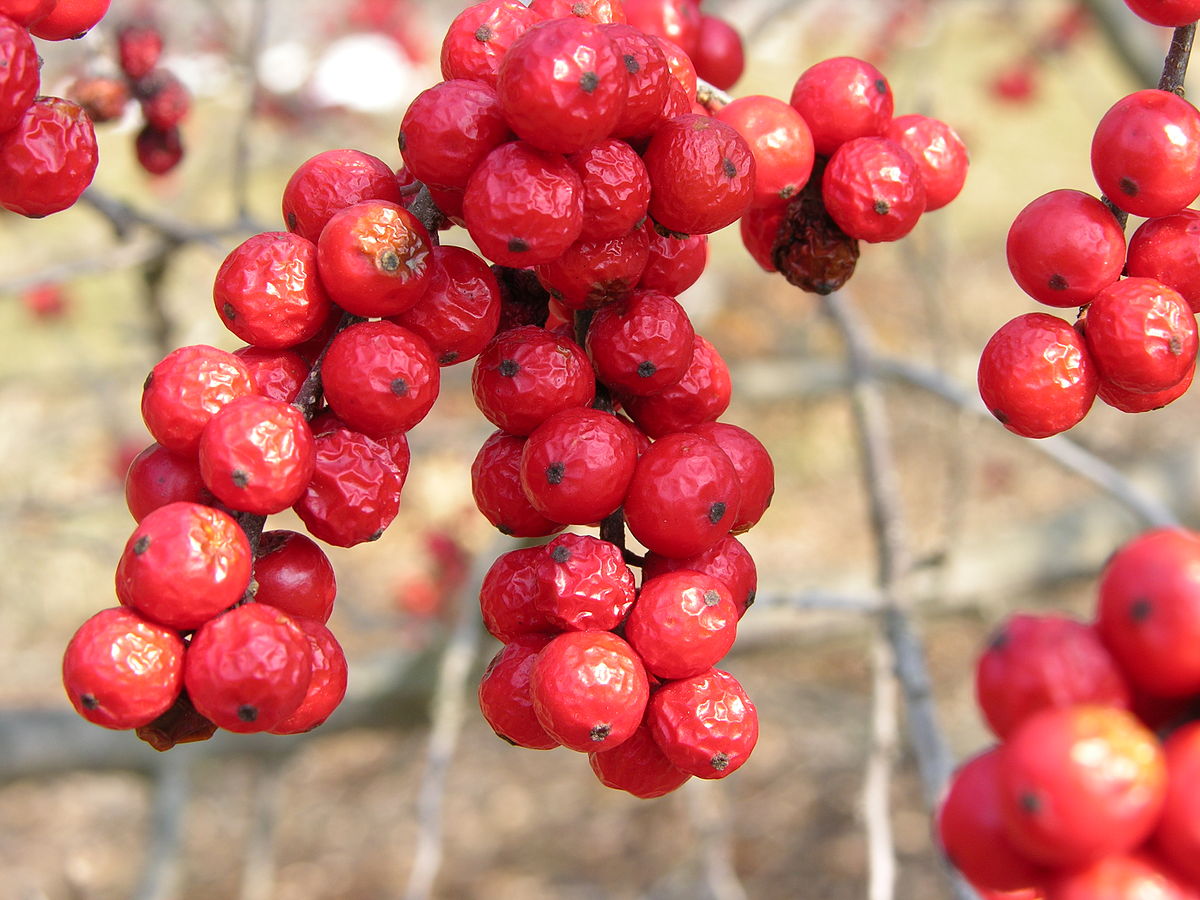Species of the Month: Winterberry Holly (Ilex verticillata)
This uniquely red plant stands out amongst many of the other species that we grow at St. Williams Nursery & Ecology Centre. For one, this plant produces a vibrant red berry (a image of: winterberry holly (Ilex verticillata)favourite of over 40 species of birds) that is sure to liven up your garden. Plus, the Winterberry Holly’s (Ilex verticillata) berries are particularly showy and remain present throughout winter. A great reminder of summer gardening during the snowy Ontario winter. Winterberry Holly stands tall with a height and spread of 3-12” (1-3.7 metres). Not only are the berries persistent throughout the winter, but their shade of red is a beautiful compliment to a white snowy landscape. The plant thrives in full sun to partly shady areas. It’s slow-growing in medium to wet conditions and tolerates wet soil, clay soil and air pollution.
Not Just a Favourite of Humans

WinterBerry From St. Williams Nursery & Ecology Centre
One of the coolest thing about Winterberry Holly (Ilex verticillata) is how much wildlife like to dine on the berries that the plant produces. Like we mentioned above, the berries are devoured by over 40 species of birds, including songbirds, winter waterfowl, and game birds. The plant is a favourite of small mammals who enjoy the berries and seeds produced by the plant as well. If you’re looking for a real Disney scene in your back yard, then we can’t image of: Winterberry Holly (Ilex verticillata)recommend Winterberry Holly strongly enough. Not only will the plant add a beautiful wintery red to your garden, but you can feel good about planting it, knowing that you’re providing a meal to small critters, and our feathered friends.
We know you’ll love Winterberry Holly (Ilex verticillata), as it’s relatively easily grown, and has a good tolerance for poorly drained soils. Keep in mind, however, that only fertilized flowers on female plants will produce the attractive red berries that are the signature of the species. Generally, one male Winterberry will be sufficient in pollinating 6-10 female plants, and once they’ve bloomed, the berries will produce a lovely red against the plant’s already greenish white leaves – the perfect colour for February, the month of love.
Want to get the most out of your Winterberry Holly? Here are some tips:
Power in numbers! Winterberry Holly makes a stunning mass shrub planting.
A great shrub to use around retention ponds or runoff ditches.
When choosing suitable companions, think evergreen in the winter. A collection of Winterberry Holly backed by a line of White Cedar, Pine, or Spruce can make a stunning contrast. In the summer, consider some herbaceous wildflowers to complement Ilex verticillata. Echinecea pallida and Symphiotrichum oolentangeinse make wonderful companion species.
